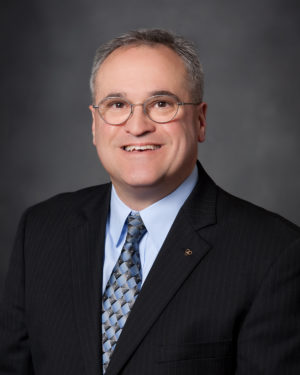Five key ways to put patient safety first
Teamwork, communication and reliability can improve patient safety

During Patient Safety Awareness Week in March, Christiana Care hosted national safety expert Craig Clapper, PE, CMQ, who spoke on “Putting Safety Culture to Work” to more than 200 caregivers.
Clapper, coauthor of “Zero Harm: How to Improve Patient and Workforce Safety in Healthcare,” is a partner with HPI Press Ganey Transformational Advisory Services, which helps health care organizations improve safety, quality and patient-centered care.
Craig Clapper’s Five Takeaways
1. Achieve high reliability by doing it right every time
From stocking a machine to double checking a medication, every correctly completed task saves lives. To illustrate, Clapper told the story of Charlie Plumb, a Vietnam War-era aviator.
When Plumb’s plane was shot down, he successfully parachuted to land, where he was captured. Back in the United States, he encountered the man who’d routinely packed his parachute. Plumb expressed gratitude for the man’s thoroughness on that day.
“You never really know when you’ll be saving a life,” Clapper said. “The day Charlie needed that chute, it worked.”
2. Practice STAR
The acronym puts a pause between each step:
- Stop and focus on the task.
- Think about what you need to do.
- Act.
- Review to confirm that your actions produced the desired result.
“People who are good at the STAR technique are doing it maybe 100 times a day,” Clapper said. “It’s a two-minute investment in lowering your harm rate by 80 percent.”
3. Communicate effectively
When a sender requests information or gives an order, the receiver should repeat it. If the conversation is over the phone or involves lab orders, the receiver should write it down and read it back. The sender then confirms or corrects the information.
Use the NATO phonetic alphabet to reduce ambiguity. For instance, “a” as in “alpha,” or “c” as in “Charlie.” Say the entire number and then each digit. “Fifty as in 5-0.”
Ask clarifying questions. “People who ask one or two clarifying questions are in the top 10 percent of communicators in health care, and they have two-and-a-half times fewer communication errors,” Clapper said, citing a study.
Using SBAR (Situation, Background, Assessment and Recommendation) helps clinicians efficiently exchange information. State the situation or problem. Provide background. Assess and analyze. State your recommendation.
4. Lean on checklists, and each other
Always refer to checklists or flow sheets for infrequently performed, high-risk or complex procedures. “We are four times more reliable when we have checklists with us,” Clapper said. Refer back to materials as needed for tasks you perform by memory.
There is safety in numbers. For instance, when identifying a surgical site, all the parties in the room — including the anesthesiologist, scrub nurse and surgeon — must agree. Check each other, he said. Working together as a team is vitally important in health care to reduce errors and improve patient safety.
5. Visualize the goal
Using the image of a bonsai tree, Clapper noted that to shape the young tree, you must imagine how it will look in the end.
Daily “huddle teams” must “snip off” processes that aren’t working and let other areas grow. These teams, which discuss everything from nursing concerns to high fall risks, are creating local learning systems focused on safety, quality and experience.
“Harness the team huddle. Put those local learning systems to work, so that excellence can be achievable by everybody every day,” Clapper said. “Have every week be patient safety awareness week.”